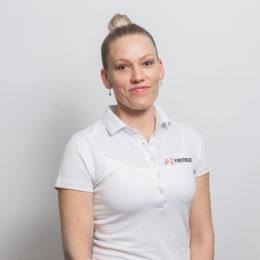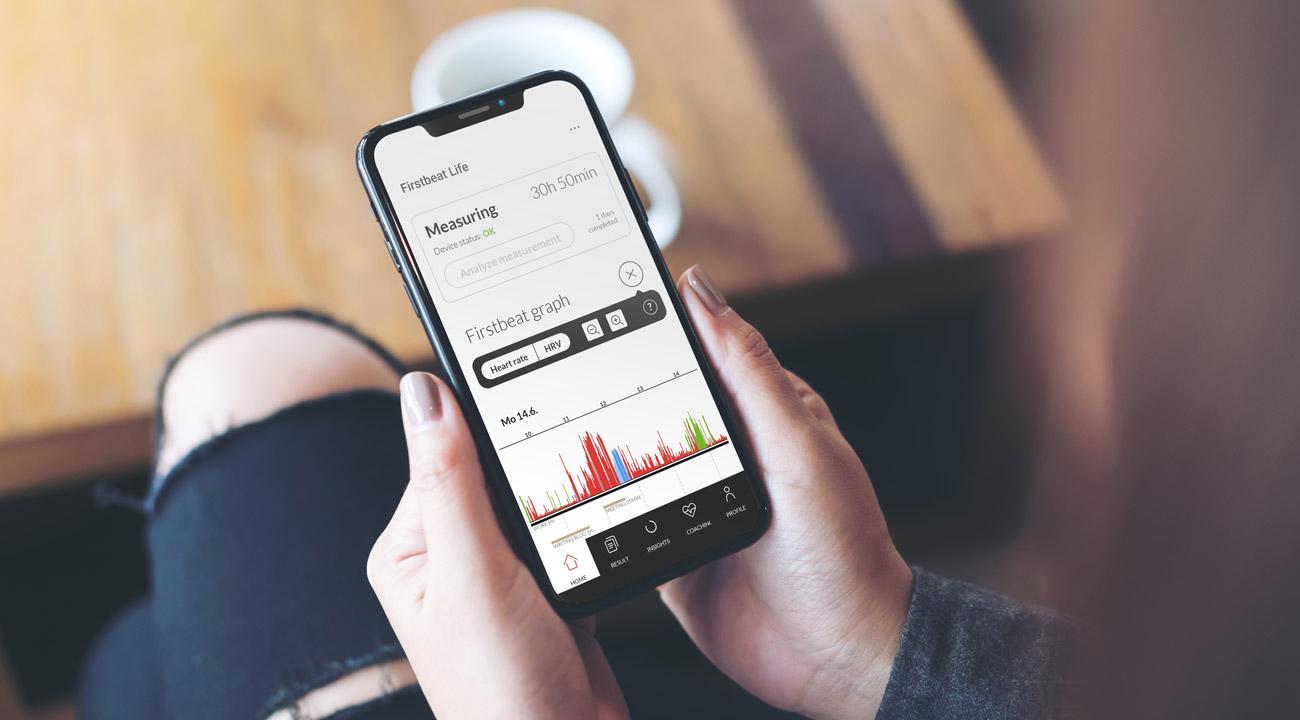
The newest feature in Firstbeat Life – real-time results – give you a glimpse into your stress and recovery status during the measurement. Real-time data allows you to react promptly and make changes to ensure good energy.
The long-awaited real-time Firstbeat graph is now available in the Firstbeat Life app. The graph is updated throughout the measurement, allowing you to monitor your stress levels, recovery, sleep and physical activity (Figure 1). This lets you, for example, react to excessive stress right away and take some time to recover and re-energize.

Real-time Firstbeat graph shows how your body responds in different situations, so you can react to stressful periods or insufficient physical activity during the day.
The Firstbeat graph is updated throughout the measurement, allowing you to:
- Get real-time feedback about your body’s reactions.
- Balance stressful periods with some recovery at work or during leisure.
- Try different things to improve your recovery – and monitor the effect.
- Get timely, objective feedback to promote learning and new habits.
Well-timed Wellness Acts – Don’t Wait Until Tomorrow
It’s easy to postpone healthier choices to a later date, and it can be hard to identify what your daily challenges are, or to know what changes you should make. At work, the most committed employees often tend to do too much, without even realizing it, and this consumes their resources. If prolonged, it can lead to more serious overload.
Real-time data motivates you to make better choices during the same day. It’s harder to skip a break if you see many hours of high red stress bars during work, or to stay on the couch all evening if you don’t see any blue physical activity bars all day.
Of course, it’s important to keep your main focus on living your life and fulfilling your duties, instead of checking your data obsessively – the idea is to check-in periodically and see what the data looks like, and if needed, make some small adjustments. Objective physiological data can help you identify small, realistic wellness acts that fit a given day or situation.
Comprehensive Result After the Full Measurement
You will get your final, more in-depth result after you complete the Firstbeat Life measurement. When the whole period is analyzed, you might notice slight changes in the Firstbeat graph. This can happen especially when you are making your first measurement and the app is still collecting information about your body’s physiology. The results become more accurate when you measure more because the app collects your history, and the analysis becomes familiar with your unique physiology.
After the measurement, you will get comprehensive information about the effect of different daily events on your well-being, and even possible health risks. You will also get daily points for the key areas of wellness (stress-recovery balance, sleep, and exercise), as well as your fitness level (if you did a 30-minute walk), your body resource status and comparison of your own results to reference values and recommendations.
The Firstbeat Life app also gives you a result-based video recommendation after each measurement to help focus your actions and turn the measurement result into concrete steps to support your stress management, recovery, and overall health.
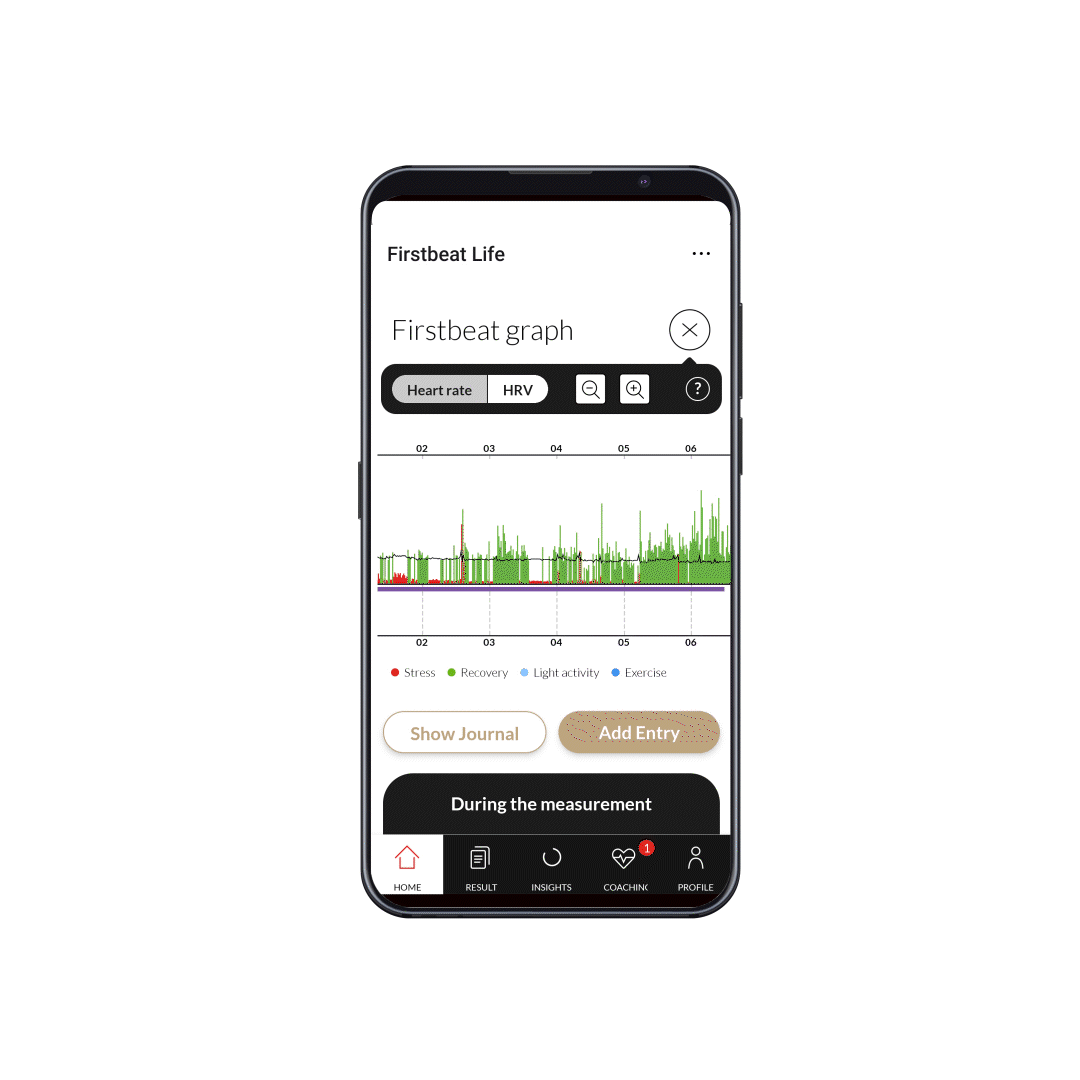
In the morning, check the data to see how well you recovered during sleep. If needed (and possible), make some adjustments. Simply easing into the day instead of jumping into full action can make it easier manage the upcoming day.
5 Tips for Taking Advantage of Real-Time Results
1. Check your stress levels during the workday.
If the graph shows high stress bars (red) consistently for several hours, try to reduce your stress level. If possible, take a break, breathe deeply for a few minutes, or change your work task for a short while.
2. Monitor your physical activity levels.
If you notice that there is no physical activity (blue bars) at all in your workday, try getting up from your workstation, walk around for a bit, or do a few exercises. Avoiding prolonged sitting and integrating short activity periods into your workday can energize you and give you the stamina to continue working in front of a computer.
3. Check to see if rest or activity is called for after the workday.
If you did not have any opportunities to be physically active during work, it’s good to stimulate your metabolism by doing some kind of brisk exercise. If, on the other hand, your workday was physically heavy, with a high heart rate level, it might be better to wind down, take it easy and only do some easy activity.
4. Check your stress level well ahead of bedtime.
This can be beneficial especially if you have trouble falling asleep at night. Heavy stress or exercise in the evening block the natural secretion of melatonin, and thus make it harder to fall asleep. Start slowing down and switching off about one to two hours before bedtime to promote restorative sleep.
5. Check your overnight result, and if needed, make some adjustments to your day.
After a poorly restorative sleep, your performance level tends not to be optimal. If possible, especially if you feel tired, try to ease into the day more gently, start with less demanding work tasks or find a way to lighten the day’s overall load.
Firstbeat Life offers pro-graded physiological measurement and personalized guidance for a healthier lifestyle. Discover what’s right for you and how to improve your physical and mental well-being, one small change at a time. Read more about Firstbeat Life!
You might also be interested in
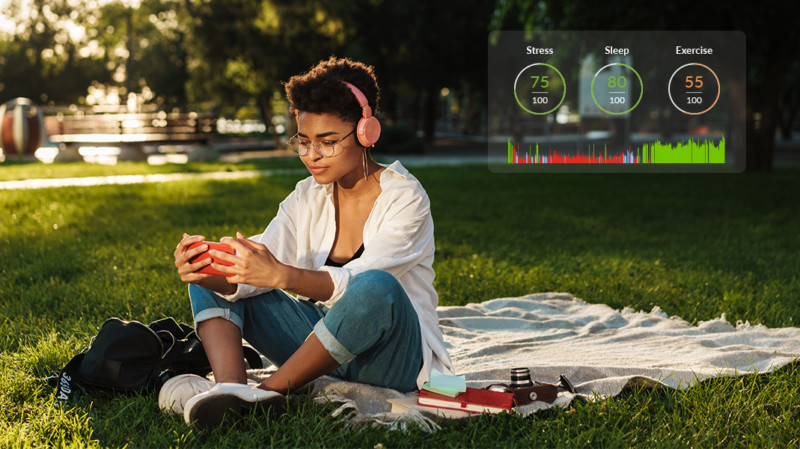
Firstbeat Graph: How to Interpret it to Understand Your Stress, Recovery, and Exercise Status
Stress, recovery and physical activity are part of everyday life. The key is finding the right balance between them. Accurate physiological measurements and the Firstbeat Graph reveal a view of…
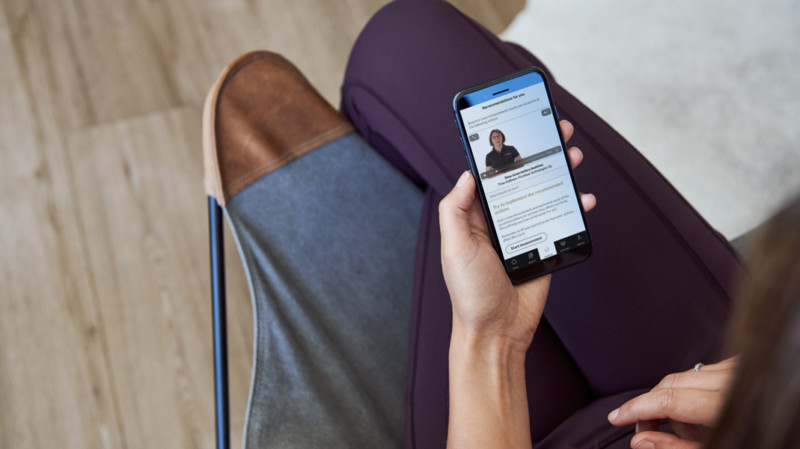
Video Recommendations: How to Turn Your Health Insights into Actions
Making healthy choices in everyday life isn’t always easy. And, as individuals, there’s no one-size-fits-all solution. That’s where personal health data and recommendations from the Firstbeat Life corporate wellness solution…

Firstbeat Life Corporate Wellness Solution – FAQ
Firstbeat Life is our cutting-edge subscription-based corporate wellness solution and the new way to support physical and mental well-being. Since its arrival and our Virtual Launch event, there has been a lot of interest and questions about the new…
